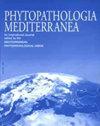Identification, full-length genome sequencing, and field survey of citrus vein enation virus in Italy
IF 1.9
3区 农林科学
Q2 AGRONOMY
引用次数: 2
Abstract
Citrus vein enation virus (CVEV) was described in Spain and then it has been reported in several citrus growing areas of Asia, America and Australia. Here, the occurrence of CVEV in Italy has been documented for the first time. The full genome sequence of a CVEV Italian isolate (14Q) was determined by high-throughput sequencing and the presence of the virus was confirmed by RT-PCR and graft-transmission to indicator plants, from which the virus was recovered six-months post-inoculation. Phylogenetic analysis based on the full-length genome of CVEV isolates from different countries showed that they are phylogenetically related to each other based on their geographic origin, rather than on their host and that the Italian isolate is more closely related to the Spanish isolate than to the other ones. A field survey revealed the presence of CVEV in some areas of Campania region (southern Italy), prevalently infecting lemon trees. In the frame of this survey, kumquat was identified for the first time as a host of CVEV. No symptoms were observed in the field so far. The infection of asymptomatic hosts and the transmission by aphid species present in Italy increase the risk that the virus could further spread.意大利柑桔脉腺病毒鉴定、全基因组测序及野外调查
在西班牙发现了柑橘静脉enation病毒(CVEV),随后在亚洲、美国和澳大利亚的几个柑橘种植区也有报道。在这里,首次记录了CVEV在意大利的发生。通过高通量测序确定了CVEV意大利分离株(14Q)的全基因组序列,并通过RT-PCR和移植物传播到指示植物来确认病毒的存在,病毒在接种后六个月后从指示植物中回收。基于来自不同国家的CVEV分离株全长基因组的系统发育分析表明,它们在系统发育上是基于地理起源而非宿主的,意大利分离株与西班牙分离株的亲缘关系比其他分离株更密切。一项实地调查显示,坎帕尼亚地区(意大利南部)的一些地区存在CVEV,主要感染柠檬树。在本次调查的框架内,金桔首次被确定为CVEV的宿主。到目前为止,现场没有观察到任何症状。意大利无症状宿主的感染和蚜虫的传播增加了病毒进一步传播的风险。
本文章由计算机程序翻译,如有差异,请以英文原文为准。
求助全文
约1分钟内获得全文
求助全文
来源期刊

Phytopathologia Mediterranea
生物-植物科学
CiteScore
4.40
自引率
8.30%
发文量
28
审稿时长
6-12 weeks
期刊介绍:
Phytopathologia Mediterranea is an international journal edited by the Mediterranean Phytopathological Union. The journal’s mission is the promotion of plant health for Mediterranean crops, climate and regions, safe food production, and the transfer of new knowledge on plant diseases and their sustainable management.
The journal deals with all areas of plant pathology, including etiology, epidemiology, disease control, biochemical and physiological aspects, and utilization of molecular technologies. All types of plant pathogens are covered, including fungi, oomycetes, nematodes, protozoa, bacteria, phytoplasmas, viruses, and viroids. The journal also gives a special attention to research on mycotoxins, biological and integrated management of plant diseases, and the use of natural substances in disease and weed control. The journal focuses on pathology of Mediterranean crops grown throughout the world.
The Editorial Board of Phytopathologia Mediterranea has recently been reorganised, under two Editors-in-Chief and with an increased number of editors.
 求助内容:
求助内容: 应助结果提醒方式:
应助结果提醒方式:


